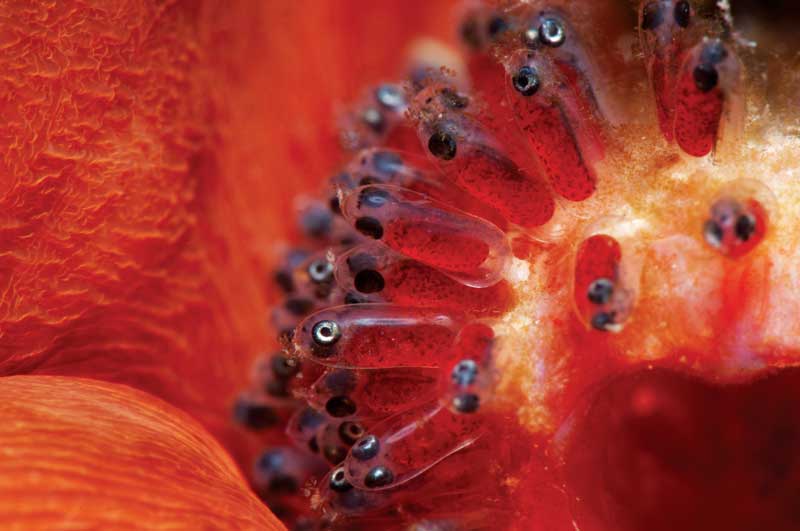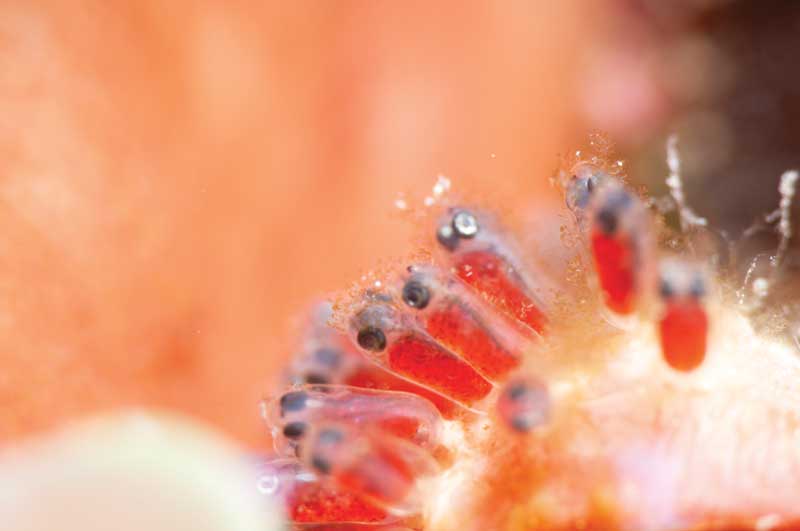Keep The Bad Ones
By Michel Gilbert & Danielle Alary

After returning from a dive, many photographers upload their images and quickly delete all the bad ones. They may be missing something in the process. We work as a couple and divide tasks. For example, Danielle keeps the photobank, edits images, and catalogues them. After a long trip this is a huge task. Michel works on the write-ups, articles, projects, correspondence, and a host of other things. He rarely gets a chance to review all the images we make.
When I review the images, I carefully store the best ones—the keepers—and also create a special file for the bad ones. The latter become an essential learning tool.
Understanding your mistakes is key to making any progress in life, including in photography. If you only look at your best images and do not take time to review the bad ones, you compromise your evolution as a photographer. In order to analyze those images, you must work in a methodical fashion and take notes along the way.
Prior to a Dive
Before a dive, set your goals and preset the camera for a “standard” image based on your camera setup. This will save time once you find a subject. Think: macro, wide-angle, fish, portrait, close-up wide-angle, shutter speed, aperture, ISO, strobe power level/placement.
During a Dive
During the dive, take mental notes about anything beyond the EXchangeable Image Format (EXIF) data. This information, which is part of your image file, includes such things as date, picture number, focusing distance, shutter speed, aperture, and ISO, among other things.
In the case of an underwater wide-angle image, the focusing distance behind a dome port is not useful, but every image file includes a host of other useful data that you don’t have to remember. As for the rest of the information, try to memorize the general setup you are using in terms of strobe positioning, power levels, the presence/absence of diffusers, etc.
When you change strobe positions or make another important modification to your setup, take a “blank” image (we photograph our hand) as a reminder. This may help bring back those mental notes.\

After a Dive
After your dive, upload the images to your computer. Create folders for the good AND the bad images. When you have time, look at your good images and, if necessary, scribble some observations in a notebook. Review the latter prior to a similar dive. Include some key EXIF data in your notes. When you have more time, study the bad images. You can make folders to categorize them according to the nature of the problem: composition, exposure, focus/blur, strobe placement/power, and others. Think about a solution and take notes. You may elect to jump in a pool, prepare a cheat sheet for future dives, enroll in a class, or schedule further readings to hone your skills. Mistakes happen all the time. What differentiates those who learn from those who don’t is “doing the same thing repeatedly and expecting different results” (a definition of insanity, often attributed to Albert Einstein).

Below: Keep the good and bad pics in separate folders. Review to determine what went wrong and how you can improve. Photos: Alary-Gilbert/SUB-IMAGES
In Good Company
When we look at the great photographs of top pros, we tend to think that all their images are perfect. What you do not see is what goes on to make a picture. For a single gorgeous image there may be hundreds of not-so-good ones that we never get to “appreciate”.
As underwater photographers, we deal with a lot of moving parts. For instance, nature is never the same. Water changes constantly, ambient light is highly variable, our subjects live in an “eat or be eaten” world, which makes them wary.
Then comes the human factor. We have bad days and good days. Michel vividly remembers a dive when he thought he had the perfect exposure parameters in his mind (this was film days). When we came back home, ALL the images were bad. His exposure was off and he had omitted to bracket.
Under the stress of the dive—limited time, impatient dive buddies, and the like—you may forget to make a specific adjustment. Even looking at the camera LCD may not bring a solution to your problem. Reviewing the images in a quiet room sometimes produce an instant answer.
Lesson Learned
You do not need to keep all your bad images forever. Storage space is limited, and we doubt you will look at them repeatedly. Having said that, reviewing your mistakes can only help. It may become the most effective learning tool in your gear bag. It may even bring a good laugh, especially after a few drinks with friends!
Leave a Comment







